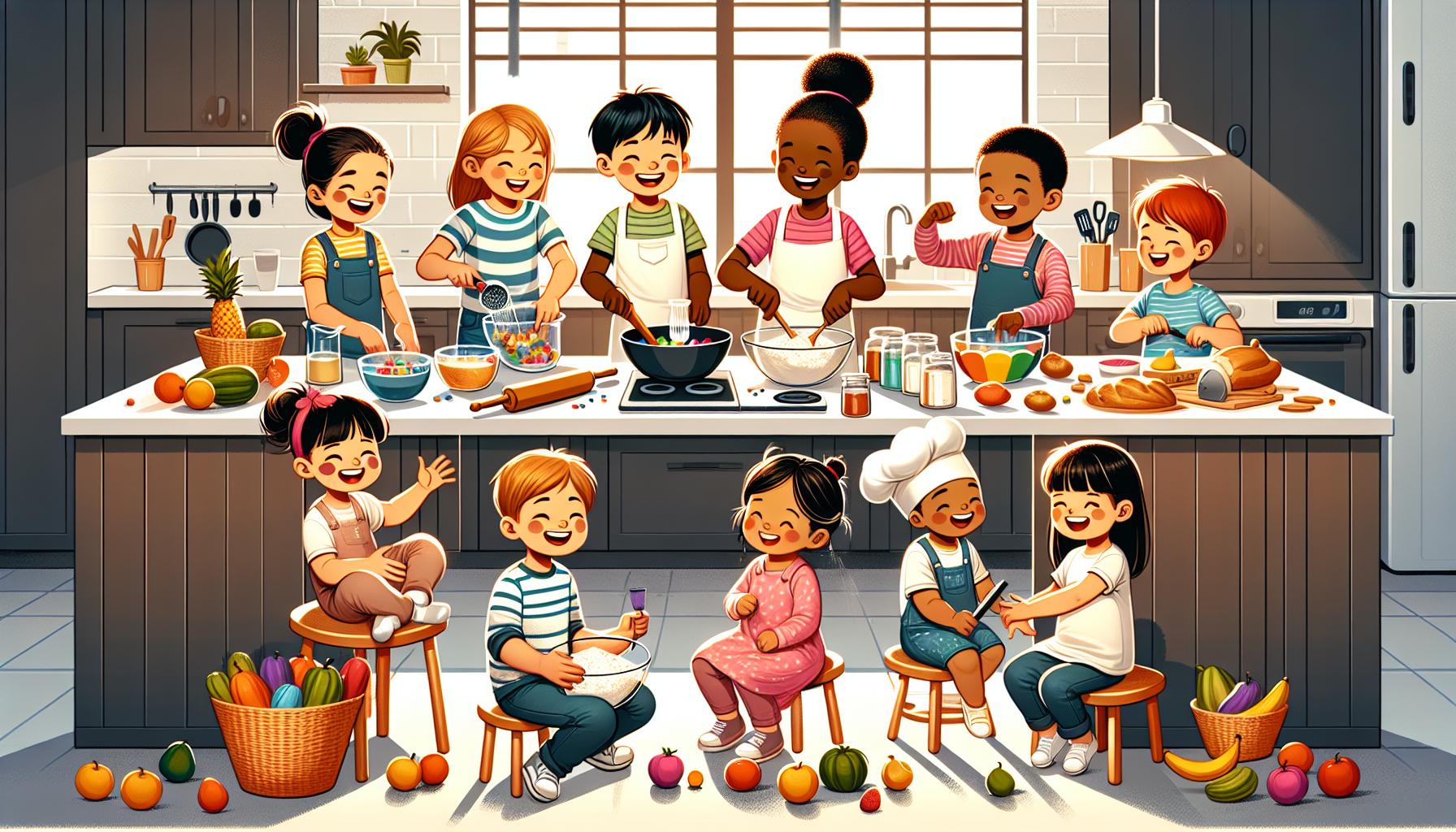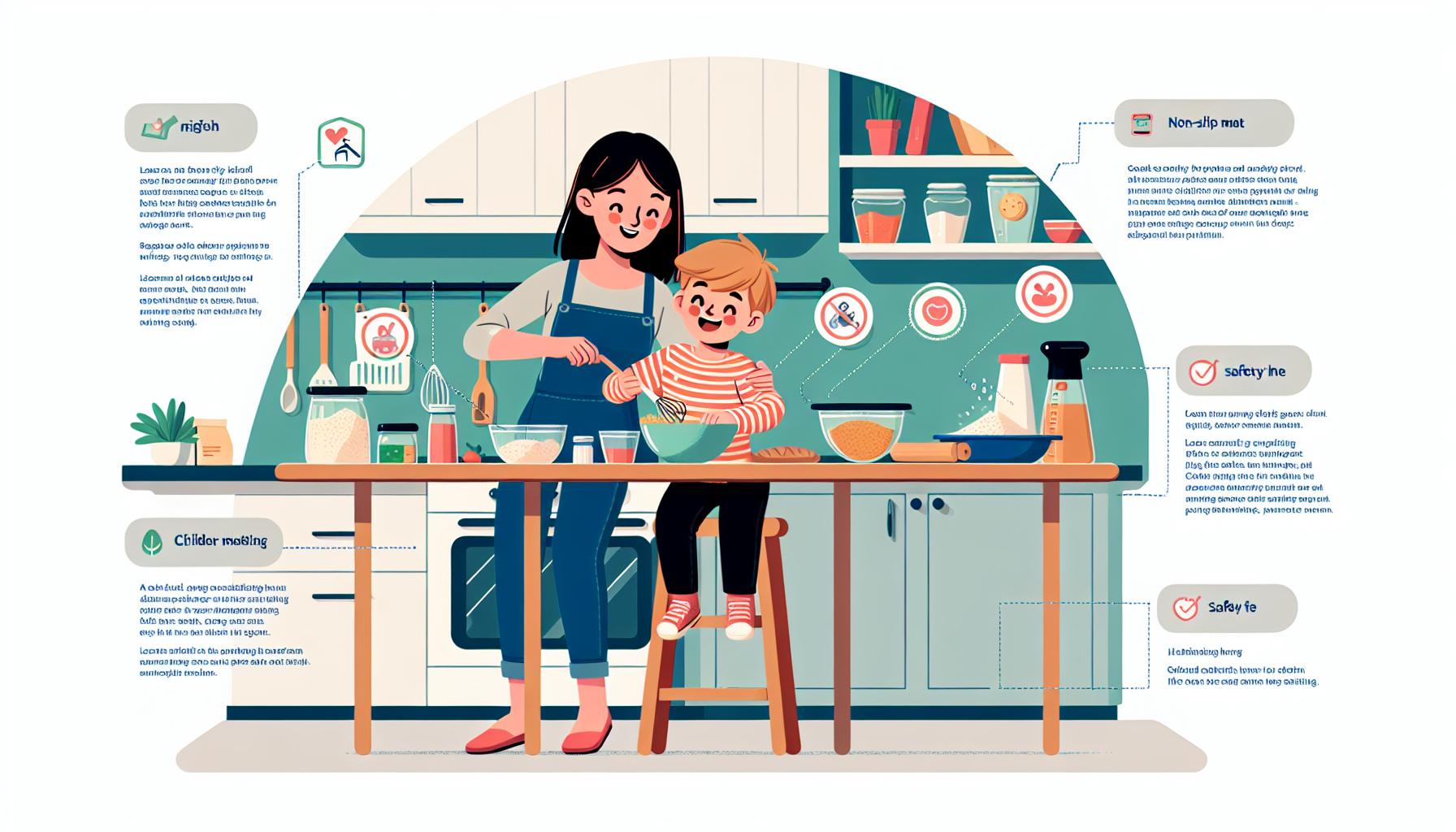
Looking for ways to spend quality time with our loved ones? The kitchen can be a perfect place for creating lasting family memories. From baking cookies to preparing dinner together we’ll explore fun activities that bring everyone closer while teaching valuable life skills.
Getting kids excited about cooking isn’t just about making delicious food – it’s about building confidence creativity and connection. Whether you’re whipping up weekend pancakes or decorating cupcakes for a special occasion there’s something magical about working side by side in the kitchen. We’ve gathered simple enjoyable ideas that’ll make cooking feel less like a chore and more like an adventure for the whole family.
Key Takeaways
- Cooking together strengthens family bonds by creating shared experiences and opportunities for meaningful conversations away from digital distractions
- The kitchen serves as a practical classroom where children develop essential life skills including math, time management, organization, and communication
- Age-appropriate kitchen tasks help children develop confidence and abilities – from simple mixing for toddlers to complete meal preparation for teenagers
- Establishing clear kitchen safety rules and maintaining proper food handling practices creates a secure environment for family cooking activities
- Fun elements like cooking challenges, music, and themed projects can transform routine meal preparation into exciting family adventures
- Regular family cooking sessions create 3-4 weekly opportunities for quality time while teaching valuable life lessons and cultural traditions
Benefits of Cooking Together as a Family
Family cooking creates meaningful connections through shared experiences in the kitchen. These moments transform routine meal preparation into opportunities for growth learning.
Building Stronger Bonds
Cooking together strengthens family relationships through active collaboration. Parents and children share stories while measuring ingredients mixing dough or chopping vegetables. The kitchen becomes a safe space for open conversations about school friends or daily challenges. Regular cooking sessions create 3-4 weekly opportunities for quality time away from screens phones or other distractions.
Common bonding activities in the kitchen include:
- Creating family recipe books with treasured dishes
- Sharing cultural traditions through traditional cooking methods
- Planning special celebration meals together
- Taking turns teaching favorite recipes to each other
Learning Life Skills
The kitchen serves as a practical classroom for essential life skills. Children develop math abilities by measuring ingredients calculating portions adjusting recipes. They learn food safety by washing hands properly storing ingredients handling kitchen tools safely.
Key skills gained through family cooking:
- Basic math: fractions measurements conversions
- Time management: following recipe steps coordinating multiple tasks
- Organization: gathering ingredients cleanup workspace management
- Problem-solving: substituting ingredients fixing recipe mistakes
- Communication: following instructions giving directions working as a team
| Skill Type | Kitchen Activity | Learning Outcome |
|---|---|---|
| Math | Doubling recipes | Multiplication skills |
| Science | Observing chemical reactions | Understanding processes |
| Reading | Following recipes | Comprehension practice |
| Motor Skills | Mixing kneading cutting | Physical coordination |
Age-Appropriate Kitchen Activities

Kitchen activities create engaging learning experiences for children at every developmental stage. Here’s how to involve family members of different ages in culinary adventures.
Toddler-Friendly Tasks
Toddlers excel at simple kitchen tasks that develop their motor skills and confidence. Let them:
- Pour pre-measured ingredients into bowls
- Mix dry ingredients with a wooden spoon
- Wash fruits and vegetables in a colander
- Tear lettuce leaves for salads
- Sprinkle cheese or toppings on dishes
- Help arrange ingredients on plates
Activities for School-Age Kids
School-age children handle more complex kitchen responsibilities with supervision. These tasks include:
- Reading recipes and gathering ingredients
- Measuring dry and wet ingredients
- Cracking eggs into separate bowls
- Kneading dough for bread or pizza
- Using cookie cutters and rolling pins
- Learning knife skills with plastic knives
- Operating small appliances like hand mixers
- Planning weekly family meals
- Creating shopping lists within budgets
- Experimenting with original recipes
- Mastering knife skills and kitchen tools
- Operating all kitchen appliances safely
- Preparing complete meals independently
- Teaching younger siblings basic techniques
- Managing food storage and organization
| Age Group | Recommended Supervision | Safety Equipment |
|---|---|---|
| Toddlers (2-3) | Constant direct supervision | Non-slip stool, plastic tools |
| School-Age (6-12) | Close monitoring | Child-safe knives, heat-proof gloves |
| Teens (13+) | Periodic checking | Standard kitchen equipment |
Essential Kitchen Safety Rules

Kitchen safety creates the foundation for enjoyable family cooking experiences. Establishing clear safety guidelines protects everyone while making memories together.
Creating a Kid-Safe Environment
A kid-safe kitchen starts with smart organization and proper storage. Store sharp knives in secured blocks or drawers away from small hands. Place heavy items in lower cabinets to prevent tipping hazards. Keep cleaning supplies locked in a separate cabinet from food items. Set up a designated prep station at child height using sturdy step stools or learning towers.
Safety features to implement:
- Non-slip mats near sinks and prep areas
- Cabinet locks on dangerous storage areas
- Stove knob covers when not in use
- Corner guards on sharp counter edges
- Fire extinguisher in an accessible location
Basic Food Safety Guidelines
Food safety practices protect families from foodborne illness. Start each cooking session with thorough hand washing using warm water and soap for 20 seconds. Use separate cutting boards for raw meat versus produce to prevent cross-contamination.
Essential food safety rules:
- Store perishables at proper temperatures
- Use a food thermometer to check meat doneness
- Clean all surfaces before and after food prep
- Refrigerate leftovers within 2 hours
- Wash fruits and vegetables thoroughly
| Food Type | Safe Internal Temperature |
|---|---|
| Ground meat | 160°F (71°C) |
| Poultry | 165°F (74°C) |
| Fish | 145°F (63°C) |
| Pork | 145°F (63°C) |
| Egg dishes | 160°F (71°C) |
Easy Family Recipe Ideas
Creating delicious treats together brings families closer while teaching valuable kitchen skills. Here’s a collection of family-friendly recipes that make cooking fun for all ages.
No-Bake Treats
No-bake treats offer a perfect starting point for young chefs to develop confidence in the kitchen. Kids can mix ingredients safely without handling hot surfaces or equipment. Popular no-bake options include chocolate-dipped fruit, cereal bars, pudding parfaits or yogurt-based snacks. These recipes typically take 15-30 minutes to prepare, letting families enjoy quick kitchen success together.
Simple Comfort Foods
Comfort foods connect families through memorable flavors while building essential cooking abilities. Basic recipes like mac and cheese, homemade pizza or chicken soup teach fundamental techniques such as boiling pasta, grating cheese or chopping vegetables. These dishes often use 5-7 common pantry ingredients, making them accessible for weeknight family cooking sessions.
Fun Baking Projects
Baking projects transform kitchen time into engaging learning experiences. Pre-measured ingredients and clear recipe guides help families focus on the joy of creating together. Kids practice following instructions while making cookies, cupcakes or seasonal treats. Each baking activity introduces new skills like measuring, mixing or decorating. Creating themed treats for holidays or special occasions adds extra excitement to family baking time.
Key features:
- Pre-portioned ingredients minimize prep work
- Step-by-step illustrated instructions
- 30-60 minute completion times
- Age-appropriate tasks for different skill levels
- Basic kitchen science learning opportunities
- Creative decorating options
- Teaches kitchen safety
- Improves math abilities
- Develops motor skills
- Boosts reading comprehension
- Encourages creativity
- Creates lasting memories
Making Kitchen Time More Entertaining
Transform everyday cooking into exciting family adventures with engaging activities that combine creativity and culinary skills. Let’s explore fun ways to make kitchen time more enjoyable for everyone.
Cooking Games and Challenges
Kitchen competitions spark excitement and motivation in family cooking sessions. Create themed cook-offs where family members prepare dishes using specific ingredients or compete in timed challenges like “fastest sandwich maker.” Set up taste-test games with blindfolds to guess ingredients or flavors. Try “kitchen scavenger hunts” where kids search for ingredients by following clues. Create “mystery basket” challenges inspired by cooking shows, using random pantry items to create unique dishes.
Music and Dancing While Cooking
Music adds energy and rhythm to kitchen activities, making routine tasks more enjoyable. Create family cooking playlists featuring everyone’s favorite songs. Turn stirring into dancing, chopping into rhythm practice or dish-drying into a choreographed routine. Play “freeze dance” while preparing ingredients – when the music stops, everyone freezes in place. Use different music genres to match various cooking tasks:
- Upbeat pop for high-energy prep work
- Smooth jazz for relaxed weekend baking
- Cultural music that matches cuisine themes
- Family singalongs during cleanup time
- Holiday tunes for seasonal cooking projects
Remember to maintain safety while incorporating movement – establish “dance zones” away from hot surfaces or sharp objects. Turn down music volume to hear important kitchen communication or timer alerts.
Conclusion
The kitchen offers endless possibilities for families to grow learn and bond together. We’ve seen how cooking activities can transform ordinary moments into extraordinary memories while teaching valuable life skills.
Getting the whole family involved in meal preparation isn’t just about creating delicious dishes – it’s about building confidence fostering creativity and strengthening relationships. Through shared culinary adventures we can create a nurturing environment where everyone contributes learns and has fun.
Let’s embrace these precious moments in the kitchen and watch as our families grow closer one recipe at a time. The memories we create and skills we develop will last far beyond the meals we prepare together.
Frequently Asked Questions
What are the main benefits of cooking with family?
Cooking with family strengthens relationships, teaches essential life skills, and creates lasting memories. It provides opportunities for learning math, science, and reading comprehension while developing communication and problem-solving abilities. Additionally, it offers regular quality time away from screens and helps pass down cultural traditions.
At what age can children start helping in the kitchen?
Children can start participating in kitchen activities as early as toddlerhood. Toddlers can help with simple tasks like pouring ingredients and mixing, while school-age children can measure ingredients and read recipes. Teens can take on more complex responsibilities, including preparing meals independently.
How can I make cooking safe for children?
Create a kid-safe environment by organizing the kitchen properly, storing sharp objects and heavy items safely, and using safety features like non-slip mats and cabinet locks. Teach proper handwashing techniques, use separate cutting boards, and ensure food is stored at safe temperatures.
What are some easy recipes to start cooking with kids?
Begin with no-bake treats like chocolate-dipped fruit and cereal bars. Progress to simple comfort foods such as homemade pizza and mac and cheese. Baking projects like cookies and cupcakes are also excellent starting points for young chefs.
How can I make kitchen time more entertaining?
Incorporate cooking games and challenges like themed cook-offs, taste-test games, and kitchen scavenger hunts. Create family playlists for background music, encourage dancing during routine tasks, and organize cooking competitions to make the experience more enjoyable.
What skills can children learn through cooking?
Children develop various skills including math (through measuring and doubling recipes), science (understanding chemical reactions), reading comprehension (following recipes), time management, organization, and food safety. They also learn important life skills like teamwork and creativity.
How often should families cook together?
Regular cooking sessions are recommended, but the frequency can vary based on family schedules. Even dedicating one meal preparation per week to family cooking time can create meaningful connections and learning opportunities.
What safety precautions are most important when cooking with kids?
Proper handwashing, adult supervision, safe handling of sharp objects and hot surfaces, and maintaining a clean workspace are crucial. Ensure children understand basic kitchen safety rules and always supervise their activities according to their age and skill level.

